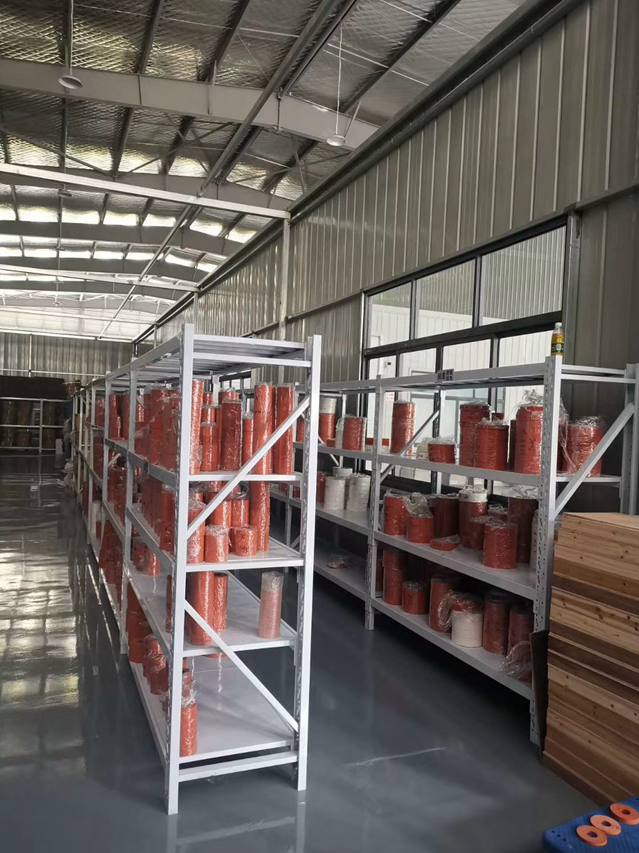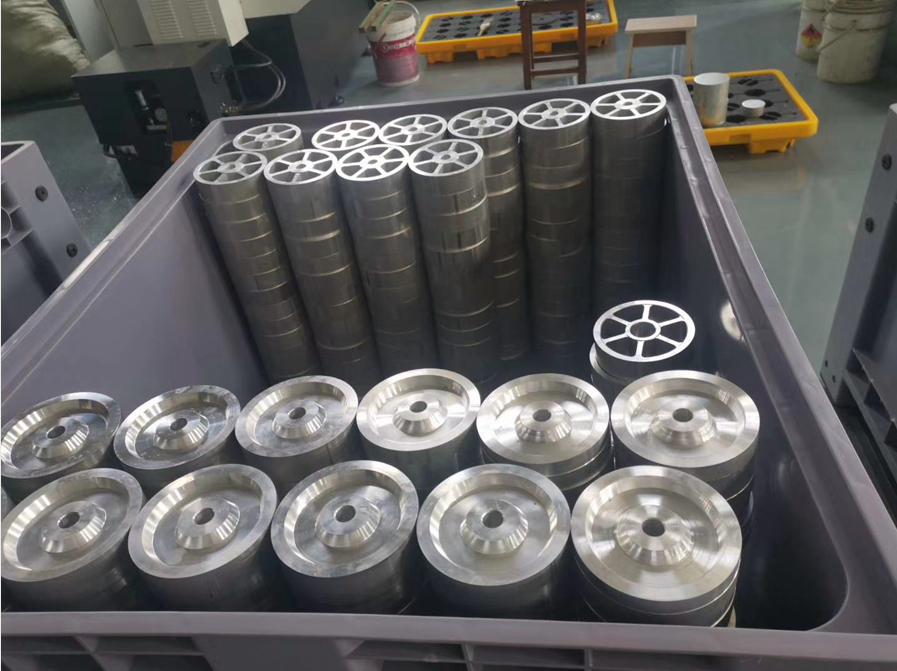1. Introduction:
The thermal transfer silicone wheel can be hot stamped on a large area of bronzing paper, brushed film, and thermal transfer printing film, and transfer the hot stamping paper to plastic or film; the thermal transfer silicone wheel is used for hot stamping on various plastics, metals, book edges, etc. Or transfer patterns to make glue. Depending on the formula of silica gel, the material can withstand high temperature (300°C-400°C), and has a long service life (normal use can reach more than 100,000 times), and its hardness can be made according to customer requirements. The hardness is 30-90 Shore A. It can be made of all silicone or coated on a metal shaft. You can also customize aluminum cores, iron cores, etc., and you can also customize various shapes and shapes. The colors are generally orange red and white, and other colors can also be deployed.
2. Features:
Good elasticity, high tear resistance, high temperature resistance, easy grinding, long service life, not easy to deform, suitable for large-area flat scalding or round scalding
Applicable machinery: cast film laminating machine|hot and cold laminating machine|clothing bonding machine|corona treatment machine|bronzing machine|heat transfer printing machine|coating machine|plastic printing machine| Press | large area hot stamping machine | lamination | hot stamping edge banding machine | hot pressing edge banding machine | and other related equipment.
Applicable fields: plastic products, wood products, daily necessities, photo frames, wooden moldings, PS moldings, electrical panels, paper products, etc. heat transfer bronzing patterns, edge banding, etc., because of its high temperature resistance, it can also be used in other industries For special products with high temperature resistance.
3. Product data:
1. Hardness: 40º, 50º, 60º, 70º, 80º, 90º (40º—90º degrees);
2. Specifications:
Inner diameter ¢38mm*outer diameter 100mm*length 300mm
Inner diameter ¢38mm*outer diameter 100mm*length 400mm;
Inner diameter ¢38mm*outer diameter 100mm*length 600mm
Inner diameter ¢38mm*outer diameter 125mm*length 300mm
Inner diameter ¢38mm*outer diameter 125mm*length 400mm;
Inner diameter ¢38mm*outer diameter 125mm*length 600mm
Note: other sizes can also be customized
3. Temperature resistance: Thermal transfer printing has low requirements on the silicone wheel, and the temperature resistance is about 260 or so.
Bronzing has higher requirements for silicone wheels, and the temperature resistance is about 300 degrees or more
Our company’s silicone wheels can withstand a temperature of up to 350 degrees!
4. The colors are orange red and white, other colors can also be adjusted



FAQ
Q1: What are silicone wheels?
Silicone wheels are wheels made of silicone rubber. They are typically used in various industries, including printing, packaging, textile, and woodwork, for tasks such as ink transfer, lamination, and polishing.
Q2: What are the benefits of silicone wheels?
Silicone wheels offer several benefits, including high-temperature resistance, chemical resistance, durability, and flexibility. They are also non-marking, meaning they won’t leave marks on surfaces they come into contact with.
Q3: What are the different types of silicone wheels?
There are several types of silicone wheels, including solid wheels, foam wheels, and sponge wheels. Solid wheels are made of solid silicone rubber and are typically used for heavy-duty applications. Foam and sponge wheels are made of a porous silicone material and are typically used for more delicate applications.
Q4: How do I choose the right silicone wheel for my application?
To choose the right silicone wheel for your application, you need to consider factors such as the hardness of the wheel, the surface finish required, the temperature of the application, and the chemical resistance required. It is best to consult with a silicone wheel manufacturer or supplier to determine the best wheel for your specific needs.
Q5: How long do silicone wheels last?
The lifespan of a silicone wheel depends on several factors, including the type of wheel, the application, and the frequency of use. Generally, solid wheels have a longer lifespan than foam or sponge wheels, and wheels used for heavy-duty applications will wear out faster than those used for lighter applications. It is important to monitor the wear on your silicone wheels and replace them as needed to ensure optimal performance.
Q6: How do I maintain my silicone wheels?
To maintain your silicone wheels, you should clean them regularly using a mild soap and water solution. Avoid using harsh chemicals or abrasive materials that could damage the wheel. It is also important to store your silicone wheels in a clean, dry, and cool environment to prevent damage from moisture, dust, or sunlight.